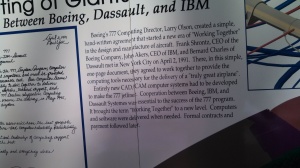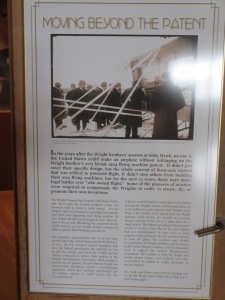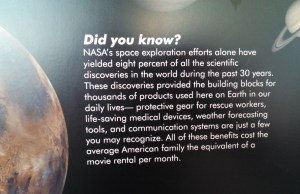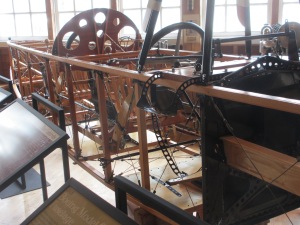What the History of Flight Can Teach Doctors
What chiropractic- and the larger medical community- can learn from the history of flight.
With a trimester schedule here at New York Chiropractic College, we recently began the classes that will take us through the time previously known as Summer Vacation. But fortunately, we did get a couple weeks off in between trimesters, and I took advantage of that time by traveling to Seattle, Washington with my parents. We spent six days in this lovely and unique northwestern city, seeing the sights and eating the fantastic food (it certainly puts the dining hall to shame).
One of the coolest sights we saw was the huge Museum of Flight, which finds a home at Boeing Airfield, named for the aerospace company founded in Seattle. As my dad and I spent the whole day here, I fulfilled childhood dreams by sitting the in the cockpit of a SR-71 Blackbird jet. However, with my head swimming with new dreams inspired by my experiences at NYCC, I found yet more inspiration and lessons that medicine, and particularly chiropractic, can learn from the history of flight.
On dreaming big
I suppose it is no surprise that a goal as lofty as space flight drew incredulous reactions in the early years of rocket design. However, much can be done “in spite of the opinions of certain narrow-minded people,” as Jules Verne wrote in the quote above. These people exist as foils for the more ambitious thinkers in any field, but, as I see it, they provide a little more fire in the belly for those they would discourage.
In Germany, rocketry’s next step from Verne’s science fiction writing toward reality was a small group of enthusiasts that began a club in 1927. Within two years they claimed a membership of 870, including a 17-year-old Werner von Braun, who would later be a celebrated rocket scientist for NASA, helping land the first men on the moon. The group’s projects were rapidly recognized by the German government, and then military. Modern medicine, too, brings us promising heroes like this, such as 15-year-old Jack Andraka, bucking all skeptics’ expectations with the invention of a new cancer detection method last year.
On cooperation
Here is something you don’t see every day: companies putting liability and compensation aside in favor of expediting innovation. In order to fast-track the completion of Boeing 777 aircraft in 1991, Boeing, French manufacturer Dassault and the software company IBM executed the industrial equivalent of the no-huddle offense, and streamlining the path to a new product. As the exhibit puts it, computers and software were delivered as needed, contracts and payment followed later.
One of the most-discussed issues in healthcare right now is electronic health records (EHRs), which are intended to make health delivery more efficient by eliminating duplicate paperwork, reducing errors, and consolidating information. Yet healthcare and IT blogs are peppered with articles about current EHR issues, or the great things that EHRs will allow us to do… someday. Administrators at different providers are hampered by records that are incompatible, doctors complain that their notes are difficult to use effectively, and regulators find the systems used to jack up profits instead of care. I think it is time for a similar streamlined approach, tying together the efforts of doctors, administrators and computer programmers and making creating the most effective record system the #1 priority.
On patented technologies
Extending the cooperation theme, patent competition was a sticking point for airplane-building pioneers, and it is just as much of a problem for those developing new diagnostic systems, treatments, and other aspects of medicine. Following the Wright Brothers’ famous flight at Kitty Hawk, they successfully secured a flying machine patent. Unfortunately for flight technology, this meant a lot of other innovators were legally and financially unable to build on this success. Then, taking action to prepare for WWII, the US government took measures to move things along, giving builders unrestricted use of the patents in creating planes for the US, and drastically lowering licensing fees.
I certainly hope it does not take another world war to push this lesson across. With patent cases becoming more prominent in stories like Monsanto’s patented crop genes, or in pharmaceuticals, where patents are bought up only to be left undeveloped, we should note that the Wrights and their other patent-holding colleagues were far from ruined by their own concessions, and that flight developed in leaps and bounds as a result, to the great benefit of all involved.
On skeptics
One man I overheard at the museum left me dumbfounded. Wait, no, I just found him dumb. Walking through an exhibit about NASA’s space shuttle program, one middle-aged man announced to another, “What a waste of taxes. So we sent a tin can to the moon, big deal! You know what? That has not benefited us at all!” I kid you not. Meanwhile, the walls around him, which he did not bother to read, described the development of products and technologies which are utterly familiar and terrestrial. These include medical treatments, exercise protocols, plastics, computer technology, engine designs, fuels, and more.
Stubbornly pessimistic and irritatingly pervasive, you just can’t please some people. But that may be a good lesson. We must learn to educate the open-minded, focus our attention on winning supporters through good results, and remain undiscouraged in our own pursuits.
On handling complexity
Here’s one for my fellow students: break it down.
It was amazing to see the early stages of a functional aircraft, such as the model shown above. Seeing a complete plane may be an impressive feat of engineering, but seeing the construction stages of these early designs was completely unintimidating. Pieces were simple and generic, including timbers, cables, brackets and bars. Several of the big names in early airplane design, I noticed, had honed their engineering know-how through a background in… bicycle repair.
I would contend that our own studies in the human body are no more difficult. There are just a lot of pieces. And now that my classmates and I have been in chiropractic college for almost a year, we have a lot of those pieces. Knowing the specific path blood takes through every part of the body? No problem if you learn it in small chunks. Fundamental understanding of stroke symptoms? Just use that blood flow knowledge in conjunction with an understanding of the function of each region of the brain. Really, a doctor’s work looks impressive to those without these fundamental pieces of information, but so does an airplane if you only look at the final product.
On the future
According to one plaque, “Researchers in numerous countries are trying to find ways to counter the effects of long-term space flight, but it may prove to be our bodies that limit our ability to explore the Universe rather than our technology.” And as a future medical professional focusing on optimizing human performance, let me just say…
Challenge accepted.





